Nationality Soviet, Russian Name Alexey Leonov Status Retired Role Cosmonaut | Time in space 7d 00h 32 m Spouse Svetlana Pavlovna Dozenko Selection Air Force Group 1 | |
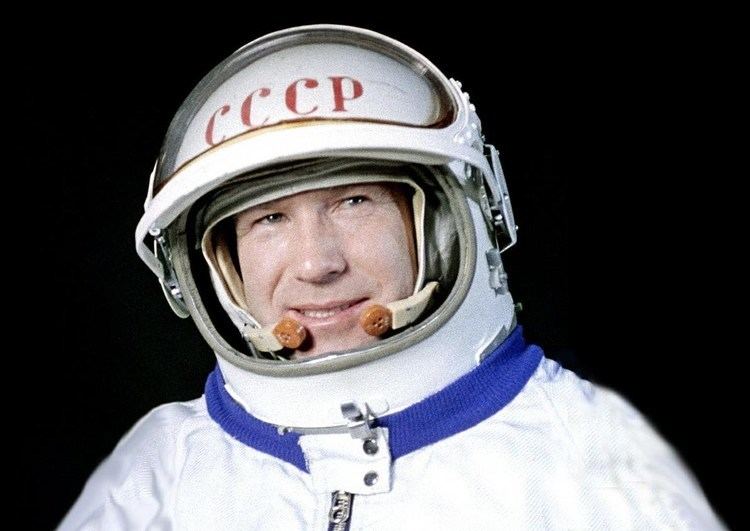 | ||
Born 30 May 1934 (age 91)
Listvyanka, West Siberian Krai, USSR ( 1934-05-30 ) Other occupation Fighter pilot, Cosmonaut Rank Major General, Soviet Air Force Space missions Apollo–Soyuz Test Project, Voskhod 2 Movies Apollo 13: To the Edge and Back Children Oksana Leonova, Viktoria Leonova Books Two Sides of the Moon, The sun's wind Similar People Pavel Belyayev, Thomas P Stafford, Valeri Kubasov, Valentina Tereshkova, Deke Slayton | ||
Russian Space Pioneer Discusses the First Spacewalk in History 50 Years Ago
Alexey Arkhipovich Leonov (Russian: Алексе́й Архи́пович Лео́нов; [ɐlʲɪˈksʲej ɐˈrxʲipəvʲɪtɕ lʲɪˈonəf]; born 30 May 1934 in Listvyanka, West Siberian Krai, Soviet Union) is a retired Soviet/Russian cosmonaut, Air Force Major general, writer and artist. On 18 March 1965, he became the first human to conduct extravehicular activity (EVA), exiting the capsule during the Voskhod 2 mission for a 12-minute spacewalk.
Contents
- Russian Space Pioneer Discusses the First Spacewalk in History 50 Years Ago
- Biography
- Honours and awards
- Legacy
- Stamps
- References
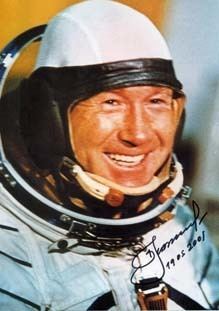
Biography

Leonov was one of the 20 Soviet Air Force pilots selected to be part of the first cosmonaut group in 1960. Leonov was a member of the Communist Party of the Soviet Union (the only cosmonaut that was not was Konstantin Feoktistov). His walk in space was originally to have taken place on the Voskhod 1 mission, but this was cancelled, and the historic event happened on the Voskhod 2 flight instead. He was outside the spacecraft for 12 minutes and nine seconds on 18 March 1965, connected to the craft by a 5.35-meter tether. At the end of the spacewalk, Leonov's spacesuit had inflated in the vacuum of space to the point where he could not re-enter the airlock. He opened a valve to allow some of the suit's pressure to bleed off and was barely able to get back inside the capsule. Leonov had spent eighteen months undergoing intensive weightlessness training for the mission.
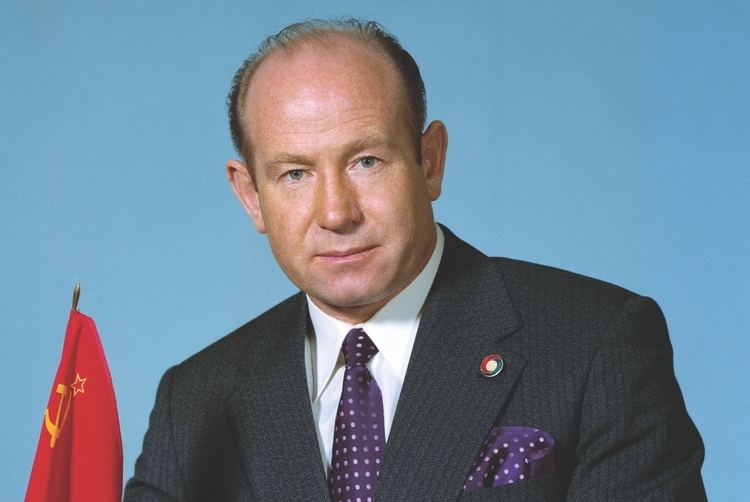
As of March 2017, Leonov is the last survivor of the five cosmonauts in the Voskhod programme.
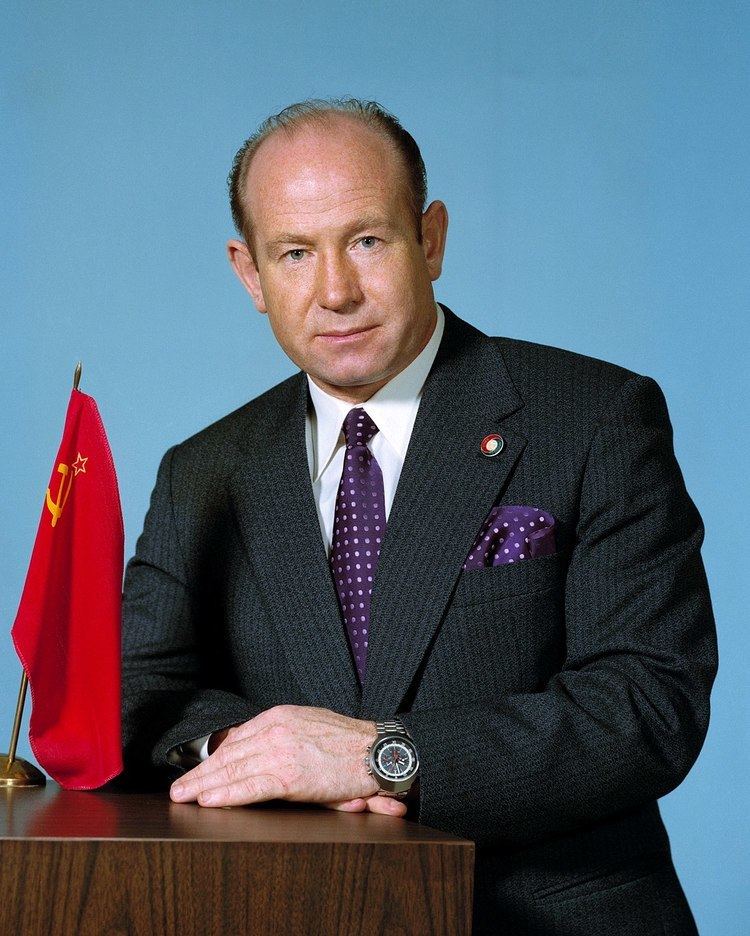
In 1968, Leonov was selected to be commander of a circumlunar Soyuz 7K-L1 flight. This was cancelled because of delays in achieving a reliable circumlunar flight (only the later Zond 7 and Zond 8 members of the programme were successful) and the Apollo 8 mission had already achieved that step in the Space Race with the United States gaining that prestige first. He was also selected to be the first Soviet person to land on the Moon, aboard the LOK/N1 spacecraft. This project was also cancelled. (The design required a spacewalk between lunar vehicles, something that contributed to his selection.) Leonov was to have been commander of the 1971 Soyuz 11 mission to Salyut 1, the first manned space station, but his crew was replaced with the backup after one of the members, cosmonaut Valery Kubasov, was suspected to have contracted tuberculosis (the other member was Pyotr Kolodin).
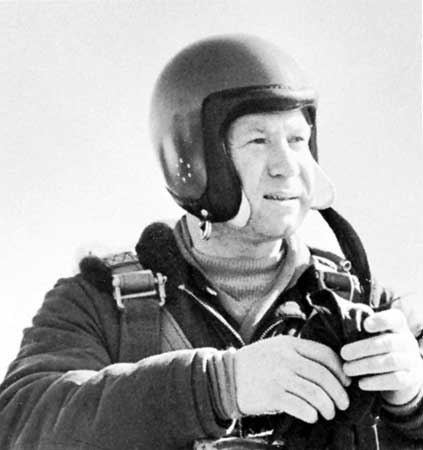
Leonov was to have commanded the next mission to Salyut 1, but this was scrapped after the deaths of the Soyuz 11 crew members, and the space station was lost. The next two Salyuts (actually the military Almaz station) were lost at launch or failed soon after, and Leonov's crew stood by. By the time Salyut 4 reached orbit, Leonov had been switched to a more prestigious project.
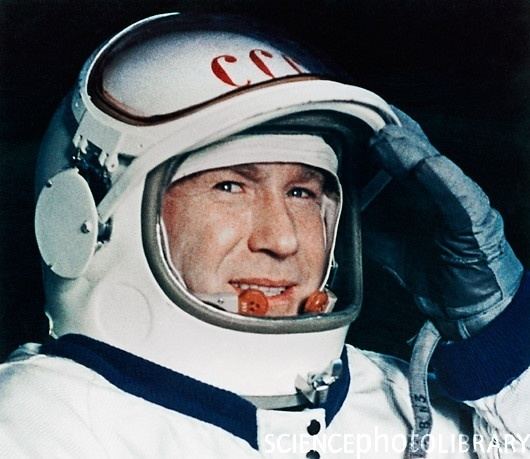
Leonov's second trip into space was similarly significant: he commanded the Soviet half of the 1975 Apollo-Soyuz mission – Soyuz 19 – the first joint space mission between the Soviet Union and the United States.
From 1976 to 1982, Leonov was the commander of the cosmonaut team ("Chief Cosmonaut") and deputy director of the Yuri Gagarin Cosmonaut Training Center, where he oversaw crew training. He also edited the cosmonaut newsletter Neptune. He retired in 1992.
Leonov is an accomplished artist whose published books include albums of his artistic works and works he did in collaboration with his friend Andrei Sokolov. Leonov took coloured pencils and paper into space, where he sketched the Earth and drew portraits of the Apollo astronauts who flew with him during the Apollo–Soyuz Test Project. Arthur C. Clarke wrote in his notes to 2010: Odyssey Two that, after a 1968 screening of 2001: A Space Odyssey, Leonov pointed out to him that the alignment of the Moon, Earth, and Sun shown in the opening is essentially the same as that in Leonov's 1967 painting Near the Moon, although the painting's diagonal framing of the scene was not replicated in the film. Clarke kept an autographed sketch of this painting—which Leonov made after the screening, hanging on his office wall.
In 2001, he was a vice president of Moscow-based Alfa-Bank and an adviser to the first deputy of the Board.
In 2004, Leonov and former American astronaut David Scott began work on a dual biography/history of the Space Race between the United States and the Soviet Union. Titled Two Sides of the Moon: Our Story of the Cold War Space Race, it was published in 2006. Neil Armstrong and Tom Hanks both wrote introductions to the book.
Leonov was also a contributor to the 2007 book Into That Silent Sea by Colin Burgess and Francis French, which describes his life and career in space exploration.
Honours and awards
Foreign awards
Public organizations
Other awards and titles
Legacy
Stamps
1965
1966
1967
1969:
1972
